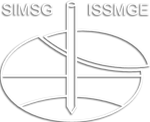Contribution 6

Submitted by: Krishna R. Reddy, University of Illinois Chicago, USA
Contaminant transport through a low permeability vertical barrier due to advective-diffusion transport mechanisms and effect of sorption
Sample Description
(1) Course Name/Type: Geoenvironmental Engineering/Elective course during junior or senior year for undergraduate students (4-year curriculum) and graduate students
(2) Course Emphasis: Geochemistry, Groundwater flow, Contaminant transport and fate, Contaminated site remediation, Waste containment and landfill engineering, Sustainability considerations
(3) Descriptive Title of Sample: Contaminant transport through a low permeability vertical barrier due to advective-diffusion transport mechanisms and effect of sorption
(4) Brief Teaching Note: The example helps us understand the following: (1) Importance of diffusion in contaminant transport despite resisting hydraulic gradient; (2) Downside of being too conservative, if diffusion is considered as the only mode of transport, as evident from the example; (3) A high Kd value has been chosen to demonstrate the significance of having an efficient sorbent, as a barrier material, in preventing contaminant transport, and (4) the use of only the first term of Ogata and Banks' solution as an approximate method can be inappropriate in certain cases.
The concentration results on the slide were obtained for the following parameters:
x=3ft (x=0.914m), hydraulic conductivity k=1×10-7 cm/s, seepage velocity vs=-8.25 x 10-8 cm/s (vs=-0.026m/y), effective diffusion coefficient D = 1×10-5 cm²/s (D=0.0315 m²/y), ne=0.4, Kd=3cm³/g, ρd=1.2g/cm³
(5) References: Sharma, H.D. and Reddy, K.R. (2004). Geoenvironmental Engineering: Site Remediation, Waste Containment, and Emerging Waste Management Technologies, John Wiley, Hoboken, New Jersey (The example on the slide is Example 8.7 on page 205, see also solution for finite flow domain, Eq. 8.53, page 201).

This work is licensed under a Creative Commons Attribution 4.0 International License.
